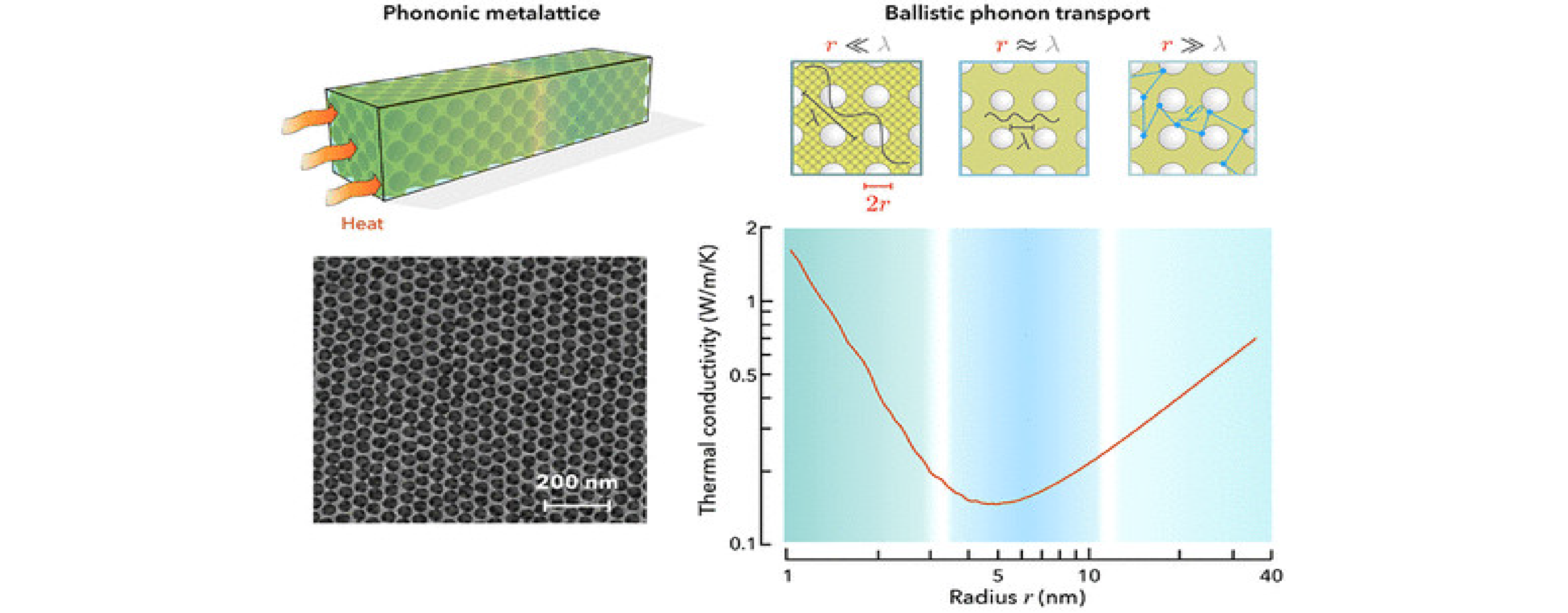Research conducted by:
Ismaila Dabo, Associate Professor of Materials Science and Engineering
Tags:
energy Materials
Research Summary:
Finding ways to manage the flow of heat in silicon could boost the performance of semiconductors, but, so far, discovering the right design has remained elusive. Now, a team of Penn State researchers report that a fabrication technique may offer a path toward mastering the often chaotic flow of heat carriers at the nanoscale in silicon and other semiconductors.
How Roar played a role in this research:
The researchers used supercomputers to test a design that inserts nanometer-sized holes into a silicon semiconductor that could dramatically influence the ability to channel heat via atomic vibrations, called phonons.
|
Article Title: |
Achieving Minimal Heat Conductivity by Ballistic Confinement in Phononic Metalattices |
|---|---|
|
Published In: |
ACS Nano |
|
Abstract: |
Controlling the thermal conductivity of semiconductors is of practical interest in optimizing the performance of thermoelectric and phononic devices. The insertion of inclusions of nanometer size in a semiconductor is an effective means of achieving such control; it has been proposed that the thermal conductivity of silicon could be reduced to 1 W/m/K using this approach and that a minimum in the heat conductivity would be reached for some optimal size of the inclusions. Yet the experimental verification of this design rule has been limited. In this work, we address this question by studying the thermal properties of silicon metalattices that consist of a periodic distribution of spherical inclusions with radii from 7 to 30 nm, embedded into silicon. Experimental measurements confirm that the thermal conductivity of silicon metalattices is as low as 1 W/m/K for silica inclusions and that this value can be further reduced to 0.16 W/m/K for silicon metalattices with empty pores. A detailed model of ballistic phonon transport suggests that this thermal conductivity is close to the lowest achievable by tuning the radius and spacing of the periodic inhomogeneities. This study is a significant step in elucidating the scaling laws that dictate ballistic heat transport at the nanoscale in silicon and other semiconductors. View article on publisher's website |

